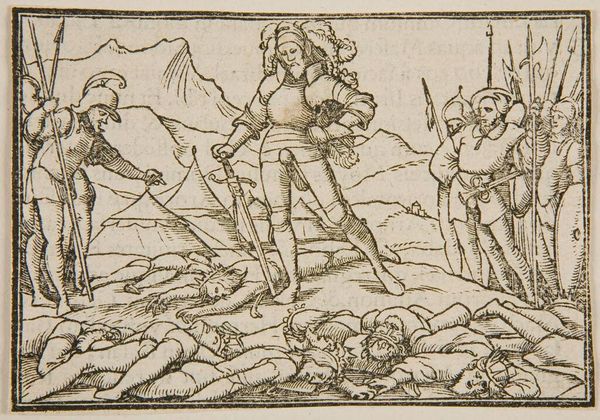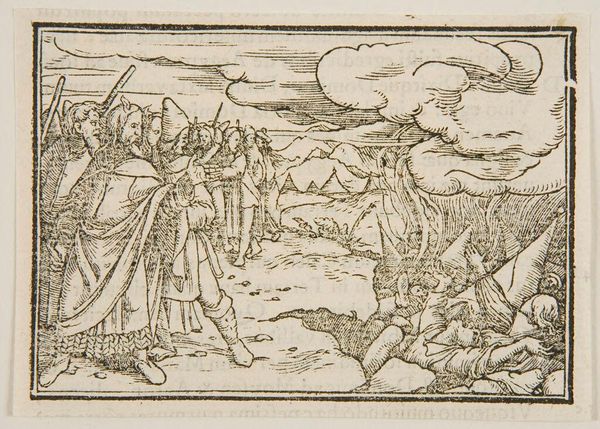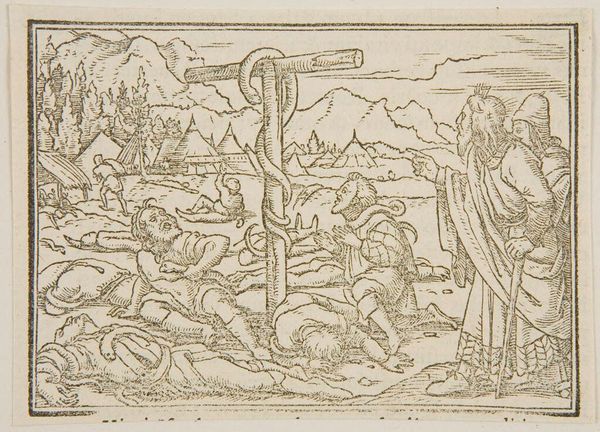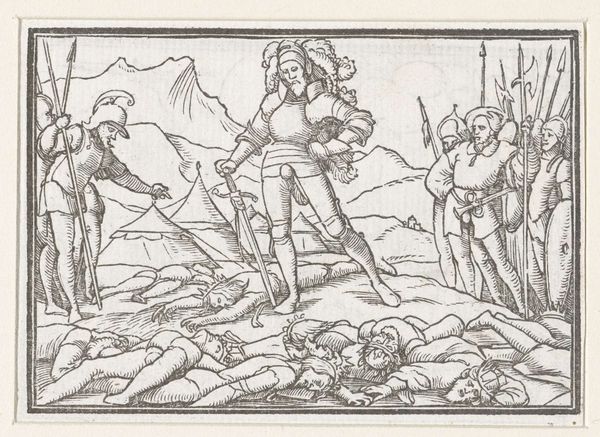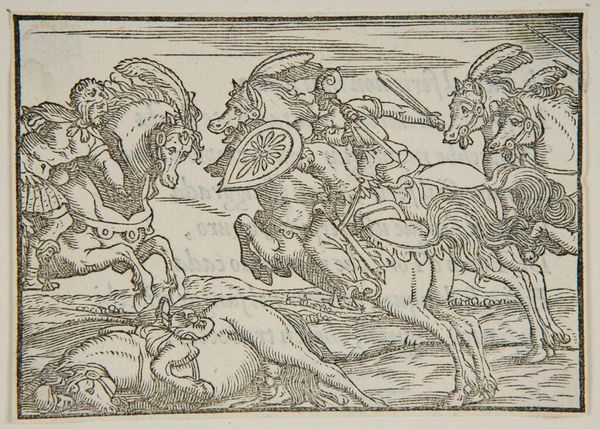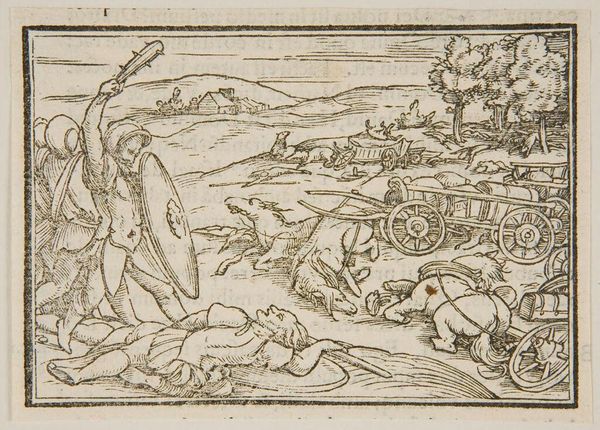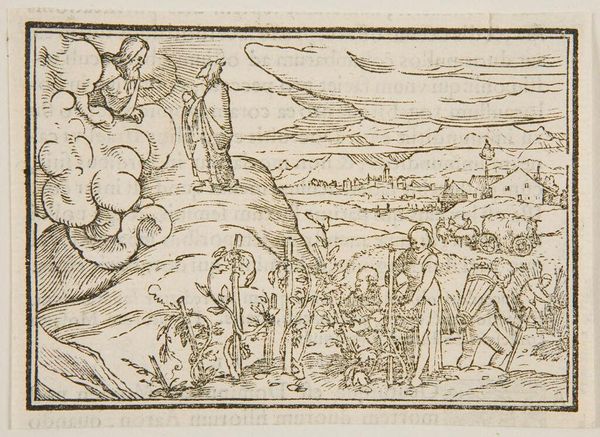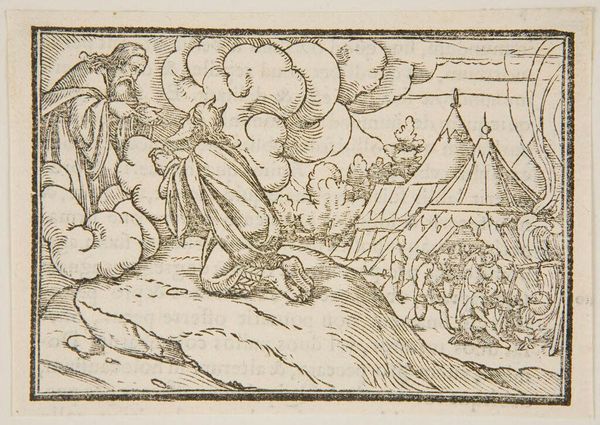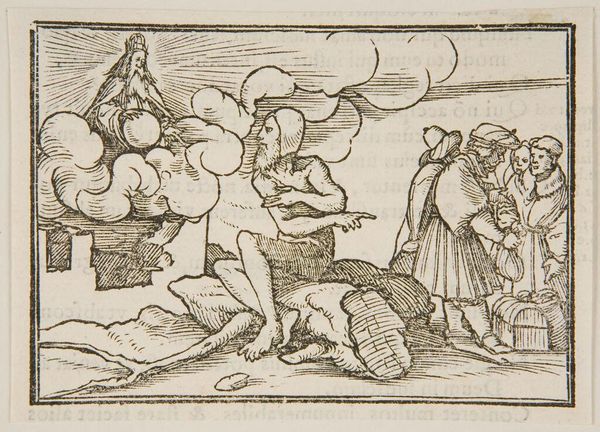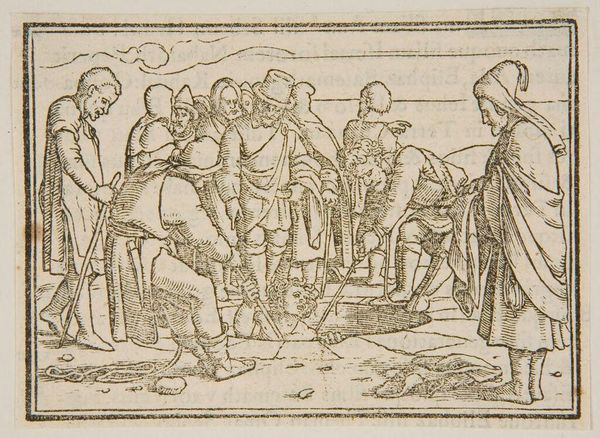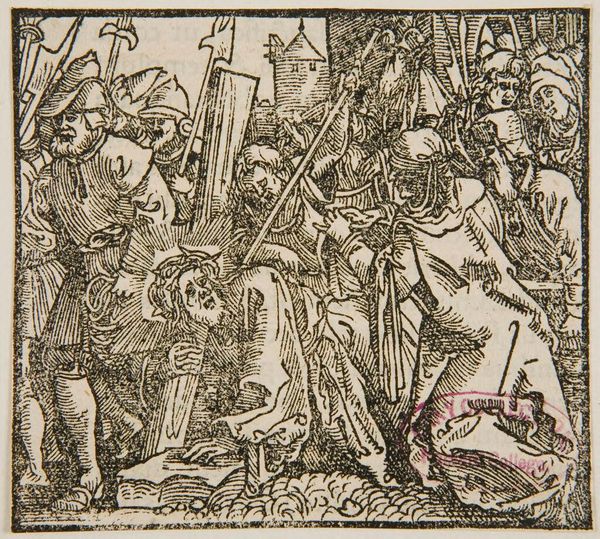
Copyright: CC0 1.0
Editor: This is Hans Holbein the Younger’s woodcut, "Joshua XII," currently residing at the Harvard Art Museums. It's quite striking – bodies scattered on the ground, a triumphant figure standing tall. What do you see in this piece? Curator: Indeed. Holbein uses Joshua as a vessel. The image carries the weight of religious war, of course, but also broader notions of divinely sanctioned power. Note how Joshua dominates the scene; his stance and sword speak to earthly authority, while the feather in his helmet may reference celestial favor. What do these symbols evoke for you? Editor: It makes me consider the power dynamics embedded in religious narratives and how they’ve been used to justify conflict. Curator: Precisely! Holbein’s use of Joshua reflects a cultural memory of leadership validated by faith, a visual language shaping perceptions even today. We see how potent symbols can become. Editor: I hadn't considered the feather as a religious symbol. Curator: It's a reminder that even small details can carry significant cultural and psychological weight.
Comments
No comments
Be the first to comment and join the conversation on the ultimate creative platform.
